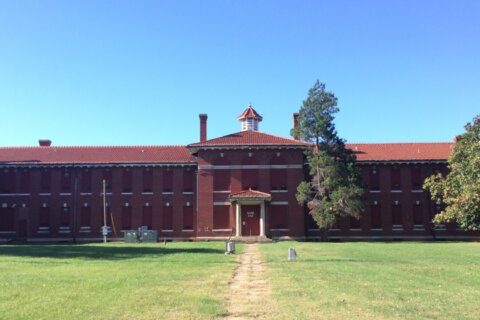For the last two years, students at Kramer Middle School in D.C. have had the opportunity to go on trips for college tours.
Some students are due to return Friday from a trip that included tours of Penn State and Delaware State, Principal Katreena Shelby said. But she said the funding for the trips was hard to find, and the school had to limit the number of students who participated because it didn’t have the funding to send everyone.
Now, it may not be as difficult, after D.C.’s Office of the State Superintendent for Education received a $21 million Gaining Early Awareness and Readiness for Undergraduate Programs grant from the U.S. Department of Education. The money will be used as part of a program aimed at encouraging 480 middle schoolers in Wards 7 and 8 to create a plan to attend college.
The initiative, scheduled to begin in mid-2024, will benefit several public and public charter schools in D.C. Kids will go to workshops and get coaching through middle and high school to make sure they remain on track, according to a news release.
“One of the barriers I don’t think people oftentimes realize is that many of our students, even now in 2023, are still first-time college students for their families,” Shelby said. “This grant is going to really be so beneficial in the long run in just changing generational narratives for years to come.”
The additional funding, Shelby said, could help the school make experiences such as college tours more frequent, up to once a month or once a quarter, “where all the students have the opportunity to go, and we’re not limited because we don’t have enough money for everyone to go at a particular time.”
Meanwhile, Gregory Spears, principal at Friendship Public Charter School’s Blow Pierce Academy, said the school currently partners with Maryland Teacher Tutors to offer tutoring five hours a day, five days each week. He’s hoping some of the grant funding will be used to expand those efforts.
As part of the initiative, D.C. students will also get an $11,000 per-year scholarship in the first two years of their postsecondary educations. Details about how students will be selected to participate in the program are expected to be shared in the coming months.
“My jaw still drops every time I read it, that students have a potential to have almost $22,000 in money allocated for college by the time they graduate high school,” Spears said. “To be able to secure that at the middle school level is something, at least to me in my experience, pretty unprecedented.”
At Kramer, Shelby said students are invested in their futures.
“The culture is changing,” Shelby said. “Kids are starting to speak about what high school they want to go to, and why, and what careers they see themselves in.”








